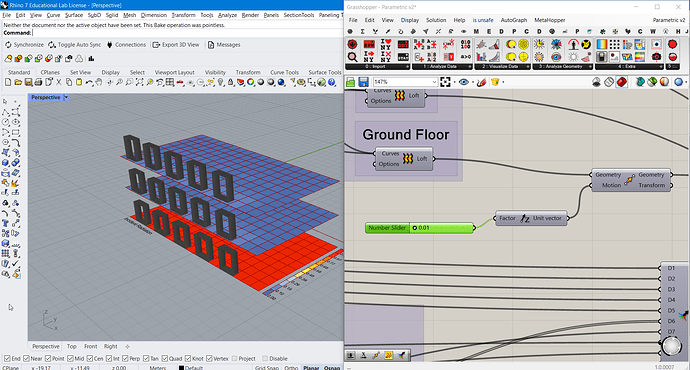I’m currently facing an issue with the Ladybug radiation analysis in Grasshopper, and I’m seeking some guidance from the community. The problem I’m encountering is that I’m unable to obtain any results when conducting the radiation analysis at ground level. However, when I elevate the ground floor by 0.15 units, the simulation runs successfully and provides the desired output.
To provide some context, I’m using Ladybug tools for radiation analysis in Grasshopper to assess the solar exposure on a building’s interior surfaces. The analysis aims to evaluate the radiation levels received at different locations, particularly at different levels.
I have ensured that all necessary inputs are correctly set up, including the location, time range, and geometry of the building. However, despite proper configuration, the radiation analysis fails to generate any results at ground level.
Interestingly, when I manually adjust the ground floor’s elevation by 0.15 units above the actual ground level, the simulation runs smoothly, and the desired radiation analysis results are produced. This temporary workaround is not ideal, as I would like to obtain accurate results without any adjustments.
I would greatly appreciate it if someone could suggest what might be causing this issue. Are there any specific parameters or settings that I should consider adjusting to ensure accurate radiation analysis at ground level? Could there be any potential conflicts or limitations within the Ladybug tools that I am overlooking?
Thank you in advance for any insights, suggestions, or potential solutions you can provide. Your assistance will be immensely helpful in resolving this discrepancy and achieving accurate radiation analysis results at ground level.
Best regards,
Dhruvin
Please access the files through the google drive link, as a new user I am restricted to upload any attachments
https://drive.google.com/drive/folders/10sLJz7-c7VpOtIjq7F27RJ6rmXhvkGsT?usp=sharing

